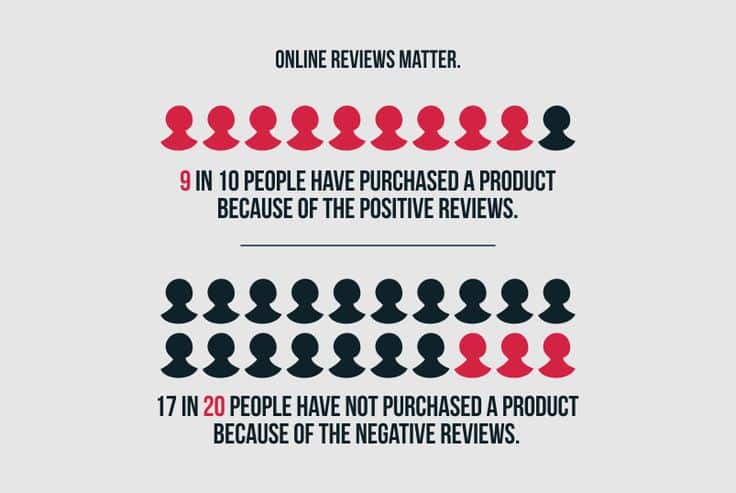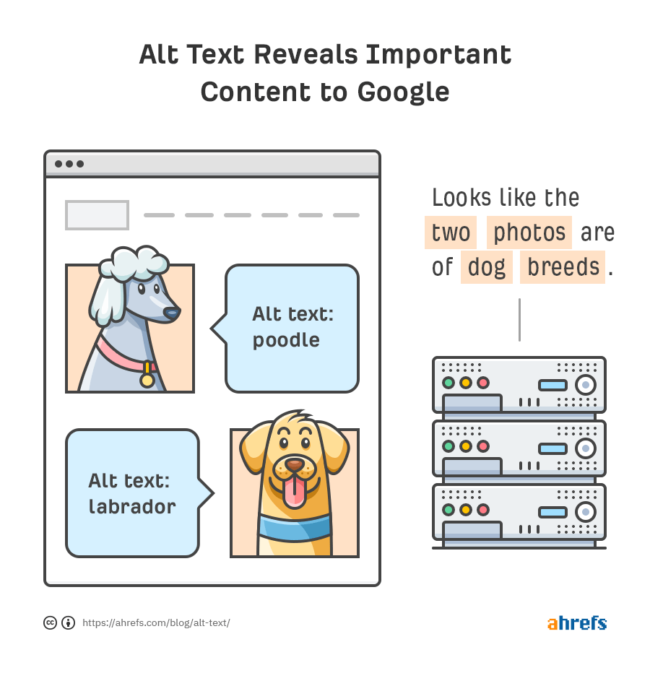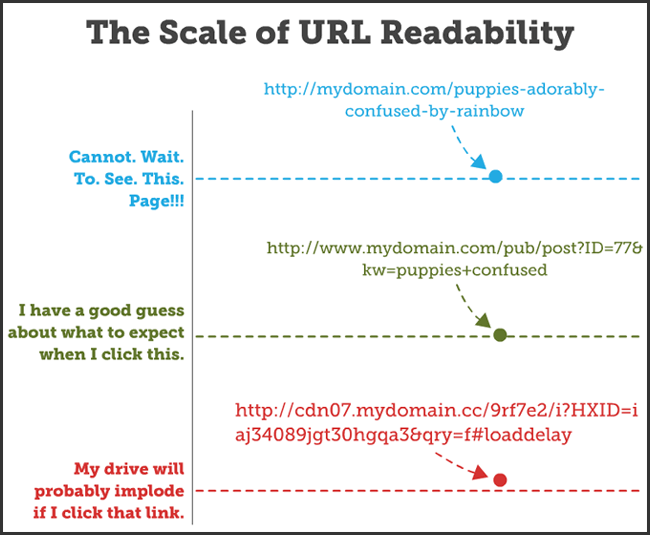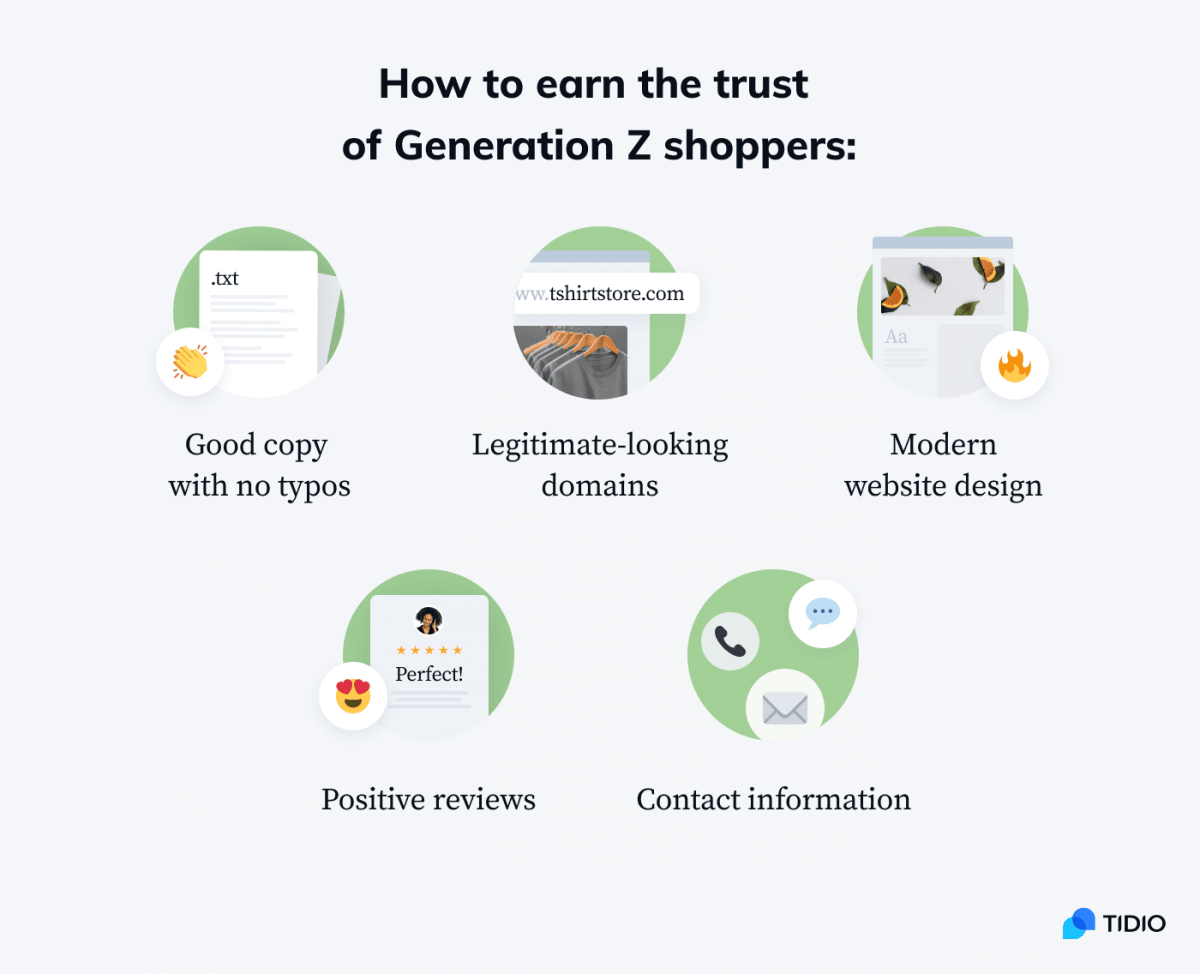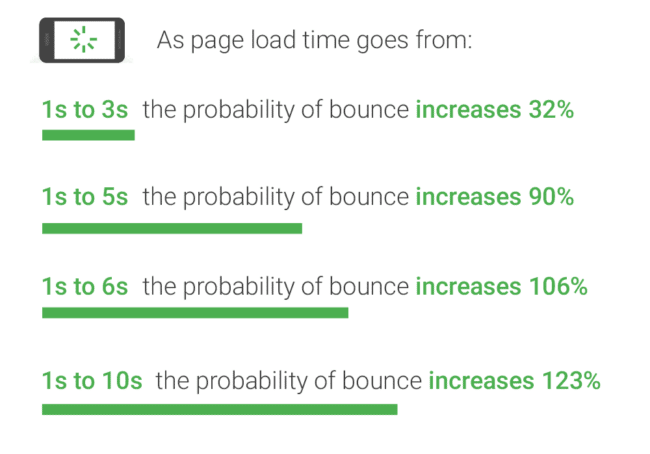
This post was written by Sean Smith of Simple Tiger. Check them out today if you need SEO/content/inbound marketing help!
I’ve worked with over 35 ecommerce sites on multiple different CMSs; from well-known and widely used, to exceptionally niche.
This includes working with:
- Drop shippers,
- Health supplement companies,
- Clothing companies,
- Florists,
- iPhone case companies,
- MacBook decal companies,
- Floor tiling companies.
Each time, without fail, they share the same problems.
There is no exception.
Regardless of your industry or vertical, if you are selling products online you should be thinking about some key elements of your ecommerce site.
In over 3 years of SEO, here are 18 of the most common problems I find in ecommerce sites.
Table of Contents
1. Bad product descriptions.
No product description, thin product description or duplicated product descriptions. Even product descriptions from the manufacturer. Skimp on product descriptions at your own peril.
Without quality product descriptions and useful, crawl-able copy your products will never rank in the top 10, even for less trafficked terms.
It is absolutely crucial to write quality product descriptions. You can outsource this to a copywriter for an incredible ROI when you factor in the organic search visits after the descriptions are in place.
An engine can’t read the images that you have represented on your product page unless they have descriptions. If the images are the only content you have, you have essentially net zero indexed from search engines.
Write actionable content such as clothing sizes charts, where the products are made, how they’re made, their unique traits, and how soft is that shirt?
Things of this nature will help the shopper but also help you get indexed. It’s a win-win.
Don’t use duplicated content from other stores and, again, definitely not the manufacturer’s site. Plagiarized content will only hurt your rankings.
Even if your manufacturer says you can use their product descriptions and it seems like a time-saving remedy to a time-consuming task, this can crush your SEO – and so your business.
They make you look spammy and essentially use someone else’s branding.
Use descriptions that could be shared! Bonobos do an awesome job of all of this and takes it the extra yard:

They not only give the Color, Detailing, Fabric, Rise, Thigh, Waist, Care, Inseam and Finish information on their pants but they also talk about the benefits of their pants (“extra comfy”, “ultra soft”) and keep is casual.
Casual, just like their product lines. Brilliant.
That’s the kind of creative that gets you shared, it’s also the kind of candidness that gets read. It’s the human element that search engines want to see and it’s the problem-solving content that users need.
2. Lack of product reviews.
Lack of product reviews, bad representation of product reviews, or no semantic markup to represent those reviews to the engines.
Product reviews are an easy way of injecting a large amount of content into your product pages. Amazon has facilitated reviews on a massive scale (average products that are worth anything might have anywhere from 12,000 to 15,000 reviews) and has seen drastic results in effect.
By setting up systems to judge and represent the reviews in a smart way (such as “most helpful” reviews batched into a list of three with a “read more reviews” button) you can inform your users very quickly and get them moving through the buying process.
Nearly 70% of users are reading reviews of products before buying, this makes it even more crucial for you to represent your top reviews before the user just pops over to Amazon, reads their reviews, and buys it there.
It’s user-generated, so it’s essentially free to you once you build the system to represent them.
It also refreshes the content of your product pages, breathing new life into them and giving Google something to crawl (find crawling and auditing tools you can use here) on its next run-through.
3. Not optimized for typical search queries.
Optimized for the product name, not the product type. Use model numbers, brand names, and categories – i.e. organize into groups that users actually search for.
I had to tell this to a florist client of mine the other day, “People aren’t searching for ‘a beautiful sunshine’ when they’re looking for flowers, so don’t use your product name as your key search indicator.”
People don’t care about the name of your product unless it’s an iPad. You need to optimize the vision of your product before you can worry about people returning for that product.
If they are looking for a certain product specifically by name, they will find it. Sometimes it’s a nice occurrence that your product name is also the direct search term like “Stargazer Lilly Arrangement.” That just works.
Target the type of your product, so if your product’s name is “A Summer Sunshine of Lilies” target lilies, not the summer sunshine bit.
To reiterate, use model numbers in your title tags, brand names, and things that people actually search for.
If you’re selling TV’s chances are a lot of people search for the model number of the individual TV’s. Facilitate that based on your niche.
4. Keyword stuffing product pages.
Stuffing the product description with keywords instead of actionable content, sizes, fitting, and usable details.
This one’s simple: just don’t stuff product pages with useless keywords. And no cheating.
There is a difference between being cunning, giving actionable content, helping the user, and stuffing a boat-load of spammy keywords just to be noticed.
What do you think will happen even if the good graces of o-holy Google shine upon you? Users will hit your page, see that the content is mostly BS and likely bounce when it doesn’t help them in any way.
You only get one first impression and that did not go well.
5. Lack of image alt text.
Not providing image alt text can be seriously fatal but really easy to miss. You gain too many SEO benefits from alt image texts to let them be ignored.
If you think about the real content pieces you have at your disposal, the real sizable content pieces, your images are chief among them on an ecommerce site. For any website, for that matter.
You have titles, descriptions, reviews, and images. A lot of images. Put that digital real estate to use.
Optimizing the alternate image text of your images can take a bit more work but it’s an easy way to target direct search terms and give the engines some great context on what those blocks of content are all about.
6. Lack of unique titles.
This harkens back to numero uno above.
Duplicate content, titles from manufacturers; not search friendly, even spammy.
The title tag of a page is Google’s biggest indicator of what that page is all about.
As the legendary adman himself used to say:
“When you’ve written your headline you’ve spent 80 cents on the dollar.”
David Ogilvy
Long story short, it’s really damn important you get this right.
Don’t use duplicate titles from other pages on your site, this will hurt your chances for any of your pages to rank.
Don’t use titles from manufacturers, as mentioned before it will only give them better credit, and could potentially get you penalized for duplicate content from a more reputable source.
Feature your product’s type as discussed in the “search queries” section above instead of the direct name.
Use model numbers if you’re in a suitable niche, make it stand out from the crowd that appears on the front page, but for a good reason.
7. Lack of SEO and user-friendly URLs
This is an issue with products, and breadcrumbs on categories.
Item numbers or cat-id’s (category identifications) instead of actual product and category names that can be easily keyword targeted and understood by both users and engines alike.
User-friendly URLs help the consumer know where they are as well as engines know what they’re reading.
Make sure you optimize this for your ecommerce store URLs. Category Ids are not anywhere near as valuable as a keyword-centric category name.
People would much rather see “/mens-pants/bootleg-mens-white-linen-pants” than “/cat-13/product-65424?pants”
This image, from our good friend Rand Fishkin, drives home the idea of a URL as a trust indicator.
It gives the user a better sense of where they are and sends valuable trust indicators as to where they are going. By this point, we are all mostly digital natives and can determine the legitimacy of a website. URLs matter.
Trust indicators like clean, SEO-friendly URLs are criminally underutilized by many retailers online. They are available and can easily be taken advantage of when setting up your sitemap and URLs.
8. Thin content on the page.
Not enough substantial content that actually gets used or consumed, or that is crawlable by the engines.
Images, descriptions, meta descriptions, related products, reviews, related blog posts, ebook style guides, and more digital collateral – you need some combination of these.
With Credo’s Guide to the Best Digital Marketing Tools, for instance, you can create a clear content strategy plan (and automate a lot of the time-consuming aspects).
All of these can be taken advantage of. Just because it’s a product and you just want the user to hit that “Add to Cart” button, that doesn’t mean ignoring they’re buying process (and your sales funnel).
9. Lack of sharing functionality kills ecommerce.
No ability to share on social is a big red flag. You’ve supremely lost the digital marketing battle if someone wants to share your content but there’s no option to do that.
This can be costly especially if you have products that are targeted at the tech crowd. Know personas to decide which network to feature.
Find the persona that is most likely to share based on your core offerings.
If you’re selling cooking wear, cooking guides, furniture, and housing products you might represent a “Pin” button, as most of those personas live on Pinterest. Selling Macbook Decals or iPhone Cases? Try a “Share To Tik-Tok” button, as tech-goers tend to live on Tik-Tok.
If it’s a bonkers poster, or just something really loopy, think about a Reddit button. You should know your channels, there should be more than one, and your content needs to be easy to share.
Remove any barriers to entry for your potential customers!
Tie in your specific audience to feature the button that you think is most suitable to them. You don’t want to spam your page with share buttons because that can dilute the core call to action of your “Add to Cart” button, so simplify your choices using personas.
10. Lack of sitemaps and robots.txt.
Sitemaps and robots.txt are the lifeblood of crawling on your site. You need automated sitemaps that update as your products update and pages are added.
This ensures that your new products, categories, and content get indexed as efficiently as possible and that it’s crawled in the most opportune path.
Most good ecommerce CMSs, such as Shopify, offer automated sitemaps, or plugins for automated sitemaps. Make sure you have something of the sort in place for your clients. Moving products and categories around, adding products, and removing products, puts a lot of strain on crawlers.
Make sure you have a constantly adapting sitemap.xml in place that can keep up with your changes on a daily basis and give Google and other search engines a clear crawling path.
11. Lack of a blog and content-driven internal linking.
You should have some combination of product-featured posts, buyer guide posts, product upkeep posts, and links to those posts from product pages and category pages.
Product featured posts are a killer way to improve your organic search volume. What can’t you get in with your product description? Use that as a blog post. Use anything of value as a blog post, and stick with the publishing.
The more pages, and the more posts, the better.
Create buyer guides, create evergreen content based around your products, but ones that even users who don’t buy your stuff will need. Make sure to have a content strategy and calendar that covers these posts above.
Product upkeep posts are a perfect example of this. For my florist clients, I’ve helped them make “Care guides” for flowers, “How to keep your flowers alive using vodka” is an easy one. These can be widely shared, and highly useful to anyone who searches.
You can feature your own product with a linked image or even a represented “Buy Now” product hover.
Link to related posts from your product pages and categories. This can help give users information about your products to inform them a ton before they buy. It can help give information where your reviews may lack.
Typically users who read a blog post about a product are 50% more likely to buy that product. Take advantage of that and write about all of your products. Throw them into your content calendar and get writing.
12. Lack of crucial technical elements.
Pay attention to proper canonicalization, 301 redirects, 404 and other redirects, and other technical elements of your SEO and site content. Read more about on-page SEO here.
Don’t use dynamic URL’s like the ones discussed above, avoid using parameters as much as possible, use dashes instead of underscores, and use all under case letters in the URL.
Shy away from URLs based on time (IE: 2013-flower-arrangements) – especially on category pages.
Don’t let your homepage redirect from the root, make everything stem from there. Otherwise, you will have a hard time ranking for anything, your links will be sparse, Googlebot will have a terrible time trying to crawl your site, and your social shares will be massively out of whack.
Things, in general, will just be a hot mess.
Here are a few other SEO tips to keep in mind:
- Keep it clean and use your main root domain.
- Don’t link to anything but your homepage from your site’s logo.
- Don’t stack redirects.
- Use 301 redirects to take users over to a different category if the category moves.
- Try rel=canonical to align duplicate categories.
- Use Google Search Console to fix duplicate content that stems from multi-page variations in categories.
13. Slow page load speeds.
You get penalized if product pages take too long to load or if you have too many large on-page images. Why? Because the user experience drops off dramatically the longer it takes your pages to load and this sends you to Google’s doghouse.
Tips for faster page speed load time:
- Use sprites for your images to make them load faster.
- Keep your source code light, keep things clean and fluid.
- Use Google’s Pageload Speed tool for specific instructions on what needs to be cleaned up.
14. Lack of schema markup.
Schema provides markup tags for products, reviews, ratings, and other objects. Schema markup includes product reviews, star guides, and other trust indicators as discussed above.
You can also use Schema.org – a collection of HTML tags that Google has adopted to improve the display of their SERPs (search engine results page). This tool helps to better represent product page information within the search engines. jects.
With this information you already generate certain trust levels with the consumer, increasing click-through rates and minimizing the questions once they hit your page.
15. Lack of content-heavy category pages.
Category pages are the perfect place to put guides, links, and other information that can help the buying process.
This is a common mishap, categories are a prime hub for content. They are the perfect place to put product guides (such as Credo’s Digital Marketing Pricing Guide), buying guides, related blog posts, and more.
Guide your users to buy with information. The more you convince them through information, the more likely they are to buy so don’t waste their time and give them what they want.
16. Lack of persona-driven buying pages.
Focus on your target and customer personas for your ecommerce shop.
What their common gripes might be while buying? What problems they may have and what decisions they may need to make? Focus here and create content based on answering those questions.
Your buyers at exactly what they’re looking for. You know what is the best solution to that answer, but they may not.
If you can understand your users down to a case-by-case buying persona for certain products you can help give them all the information that is suited to them and easily funnel them to buy the product with informed consent.
Think about how Google wants to show you only information that is related to you (local targeting, for instance).
If that’s the case, they will surely show your users the information that they think relates to them the most. So should you (and in doing so, you will rank for those users in the long run).
An example of a persona is someone looking for minimalist running shoes. They might be trying to switch to minimalist running shoes from traditional running shoes and wondering what the differences are or what the benefits may be.
Perhaps, they also don’t know much about the best minimalist running shoes or the history behind them, as they’re used to traditional running shoes.
Many don’t know what key points to look for at this point in the buying process, so give them an 80/20 approach for what to look for.
You could:
- Represent a “category” type page based on minimalist running shoes,
- Show a video of the difference between minimalist running shoes compared to traditional running shoes.
- Put up links to the most popular brands of minimalist running shoes based on sales,
- Give the key points to look for (e.g. rise and drop of the shoe, weight of the shoe, trail or road shoe).
- Create related blog posts such as the benefits of minimalist running shoes.
- Represent 3 of the top best-seller running shoes on the page.
If that page doesn’t convert then I’m Fred Astaire, and I can’t dance.
17. Lack of local SEO information.
This is a common issue for ecommerce stores with brick-and-mortar locations.
Struggling with your local SEO and getting customers? These vetted digital agencies specialize in just that.
If you have a brick-and-mortar location it’s imperative that you include that address in your footer. If you have multiple, have a zone guide somewhere on your site, and list your headquarters address in the footer.
This will supercharge your local SEO results and should get more customers in the door.
What Is Local SEO?
Local SEO is a subset of search engine optimization that involves optimizing your site to rank well for location-based searches.
After all, reaching searchers halfway around the world won’t do your business any good if you can’t actually sell anything to those people!
Instead, focus your SEO strategy on reaching searchers that match your customer persona and target audience.
If you’re marketing an Italian restaurant, for example, you’ll want to make sure that your site appears in search results for the query, “Italian restaurant in Philadelphia.”
You need to include that data because Google will rank you far better for those locations and you can dominate locally relevant search queries.
This is an advantage that local brick-and-mortar stores have over online-only stores. If you don’t offer anything at your physical location, focus on where your stuff is made.
If your product is “Made in the US”, that is a USP (unique selling point) of its own credit.
18. Lack of a strong, dynamic CMS.
A strong, dynamic CMS for ecommerce stores makes all the difference between a painful ecommerce experience and a dream-inducing one.
With some software, like those listed in the link above, all of these practices above will come almost standard (except for the content obviously) mainly technical though.
My absolute favorite ecommerce CMS is Shopify. It’s bar-none my favorite I’ve personally ever worked on. It handles pretty much every SEO element for you from a technical perspective so you can focus on your content and products.
It also has a very broad theme and plugin directory much like WordPress and with an incredibly user-friendly interface with an integrated analytics dashboard. This helps to see at a glance how your site is performing.
Here are some other resources if you want some more tests out for your digital strategy.
- A great article focusing on the general content issues of e-commerce sites. Drilling down on individual product descriptions etc.
- “7 Critical SEO errors of E-commerce Websites” by Neil Patel
- An article focusing on the necessities of an SEO-friendly ecommerce platform. Many features to look for and things to consider whilst choosing what CMS to run your shop on.
- Moz’s “Choosing an SEO Friendly Ecommerce Platform: 20 Features to Look For” by Spencer Yao
- A few interesting common issues with ecommerce sites. A little less granular than the rest, but still a good read.
- Webfx’s “4 Common Ecommerce SEO Problems (& How to Fix Them)” by Abby Fields
If you want more help with your ecommerce SEO, or want someone to elaborate on your specific needs I’d be happy to take a look! You can contact me via email or tweet me.
This post was written by Sean Smith of Simple Tiger. Check them out today if you need SEO/content/inbound marketing help!

